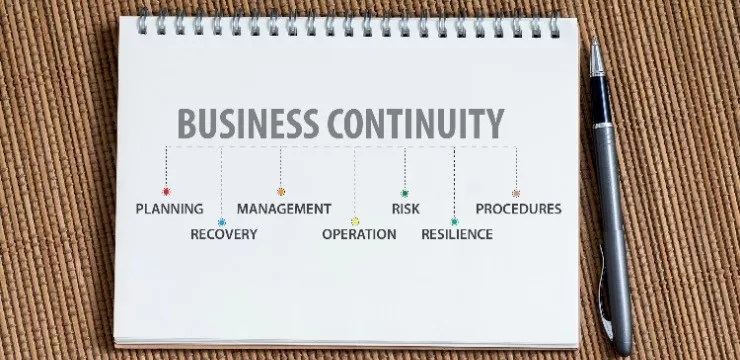
Business continuity planning is what companies reach for during hard times like the coronavirus crisis that is now troubling the world.
A company who needs to transfer its workforce to the home environment, for example, must implement such a plan. As the name suggests, this is when a business determines how it will continue in times of crisis, and formulates a plan to do so.
Business continuity planning definition
According to Investopedia, business continuity planning (BCP) is the process involved in “creating a system of prevention and recovery from potential threats to a company. The plan ensures that personnel and assets are protected and are able to function quickly in the event of a disaster.”
We will explore this concept further in this article.
Business continuity planning during COVID-19
During the current coronavirus affair, companies are laying off personnel and sending the remaining workforce to work remotely from home. As a result, business continuity planning has taken on new significance.
Small companies and organisations that believed BCP to be something unlikely ever to be needed have been proven wrong, as business operations all around the world are affected.
Companies need a plan that will protect their resources and workforce in order to compete. Such a plan will help the company to function coherently and keep the workforce on track with the vision.
Any company that is caught off guard without a contingency plan during these hard times will go out of business in no time.
The process of business continuity planning allows the company to anticipate unforeseen negative circumstances before they happen. This allows them to determine what they must do during such times to keep on operating.
How to conduct business continuity planning in 6 steps
1. Establish the desired end results
Step one is to determine what the main objectives and goals of the plan need to be in order to keep the company running. There may be different levels of crisis the plan can cover. Which departments are critical in these imagined circumstances?
You’ll need to set the goals and then measure the milestones along the way to achieving those goals.
You will also need to decide how much to invest in the plan. Be sure to include research hours and training sessions for the implementation of the plan.
2. Form a business continuity taskforce
The company must pick team members to be responsible for implementing the plan. The team can be divided into Command and Control Teams vs Task-Oriented Teams to ensure leadership and production are both taken care of.
3. Perform a Business Impact Analysis
This looks at the impact that the plan could potentially have on each aspect of the business.
It’s a good idea to create a business analysis template that considers all the effects of the plan. The company must then run the template through an actual impact process and determine if there are any loopholes in the process.
Take these learning experiences and polish the plan so all the kinks are worked out before you need to execute it in reality.
4. Identify weak points and dependencies
The company needs to identify all the areas of the business where any period of downtime will most harm operations. Rate which parts of the company are weakest, then set aside resources to support the losses in these departments.
5. Create skeleton plan of action
This will include three parts: prevention, response and recovery. There must be a list of actions to take in the event of an emergency.
Prevention is what your organization needs to do now, before the crisis occurs. Response is what you do when the disaster takes place. Recovery outlines the actions the business must take in order to move forward from the initial event.
6. Testing and training
The company must establish a training plan for the team to ensure that, in an emergency, everyone knows exactly how to respond according to the BCP.
It would be wise for the company to stage a mock event scenario to see how well the business continuity planning is implemented. Any stress in the process can be repaired and the system fixed, so it flows properly when a real event occurs.
Business continuity planning and technology
Companies today have had to make adjustments to their entire operating processes. The majority have had to send workers home and establish work-at-home workforces.
In times such as these, the Chief Information Officer must select digital tools and software to enable the at-home remote workforce. Processes for internal meetings, evaluations, plus customer and client interactions must all be reconsidered.
A key consideration is that the workforce may not be tech-savvy. Yet, now they are required to work from home. The quicker organizations can upskill employees and get them tuned into new digital processes, the more likely they are to survive.
Companies have had to switch almost overnight from a traditional workforce to a remote workforce and at a worldwide level because of the coronavirus event. So companies must refine their processes to fit into the home-based work reality.
The silver lining of a home-based workforce is that companies could save revenues on many fronts. Not only that but they’ve been forced to streamline many processes using digital technology.
So, now you know how to conduct your business continuity planning and why it’s so important in times of disaster, such as COVID-19. Make sure you give your at-home workforce the best chance of being productive during these times by ensuring they have the right technology at their disposal.
WalkMe Team
WalkMe spearheaded the Digital Adoption Platform (DAP) for associations to use the maximum capacity of their advanced resources. Utilizing man-made consciousness, AI, and context-oriented direction, WalkMe adds a powerful UI layer to raise the computerized proficiency, everything being equal.



